WHAT IS IT?
Ghosts of Dragonspear Castle is a 281 page preview of the next edition of Dungeons & Dragons that includes four linked adventures and a work-in-progress version of the rules. It is meant to present the game as it was in the later stages of development – that is, it is the state of the game during the final two months of an extensive 2 year open playtest that included upwards of 140,000 participants.
In the foreword, Christopher Perkins is careful to say that this is NOT the next edition of the game. He goes on to say that the D&D team wanted to have a product ready for GenCon, but that they couldn’t name the book “D&D Next GenCon Hotness” so they named it Ghosts of Dragonspear Castle instead. It is meant to be a silly/comical statement, and it does match the humorous tone of the rest of the book, but it also says a great deal about the product. Wizards of the Coast wanted a product to showcase at the industry’s biggest convention whether the next edition was done or not, and Ghosts of Dragonspear Castle is the result of their desire to garner GenCon buzz.
At the very least, this product is a piece of history as it documents a step in the development of the most famous RPG. For that reason alone I am happy to have this book, but am I happy with the contents of the product? Read on to find out…
I WILL NOT HESITATE TO REVEAL FACTS ABOUT THIS ADVENTURE THAT ONLY THE DM SHOULD KNOW, SO IF YOU ARE GOING TO BE A PLAYER, CONTINUE READING AT YOUR OWN RISK
So exactly what do you get in this product? I am going to go over each section and then I will get to the adventures in more detail, talk about the art, and then finish it up with a final verdict.
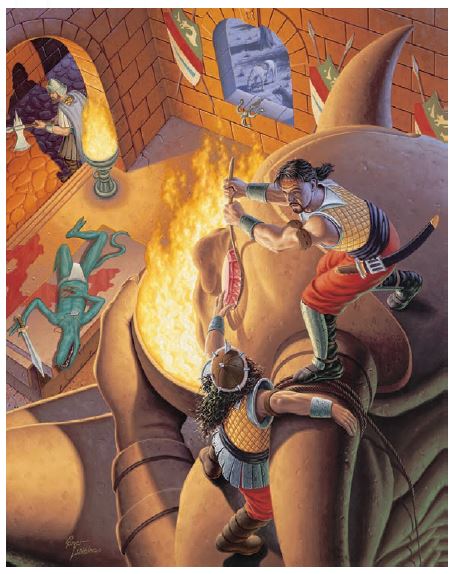
CONTENTS
Adventures
The largest portion of the book contains the 4 adventures and a short location guide. This portion is 140 pages, with each adventure getting roughly 32 pages and the location guide bringing up the last 12 pages. The adventures contain no creature information, so there is no “wasted” space containing monster stats. This is a break from the 2-page encounter format used in late 3.5 and 4e D&D. It means that the entire 128 pages are dedicated to information directly relevant to running the adventure, but not necessarily statistically based (i.e. not all rules crunch). I like the format because the text points to specific pages where creature stats can be referenced, but the stats aren’t there breaking the flow of text. I will discuss the individual adventure components, including specific pros and cons later in my review.
How to Play
Pages 144-165 detail the basic rules of the game. This section is meant to be read by players and DMs alike in order to learn the basics of the system. This rule-set is the August 2013 playtest packet release which lacks both skills and feats and adds knowledge checks in the form of Lore specialties. This is an old packet, so I won’t review it at this time. I will say, though, that it has almost, but not quite everything needed to play the game. I will discuss what is missing when I talk about the adventures below. There is also some wasted space on page 146, which provides the same table twice.
Magic
Pages 166-189 are spent describing the magic system (2 pages) and descriptions of cleric and mage spells (21 pages). This is basic fare for spellcasters and there is nothing much to be said about this section. Although I should mention that it only contains spells relevant to the adventures and the pre-generated characters, so it is not a complete D&DNext spell list.
Equipment
Pages 190-201 are given over for equipment descriptions and explanations. Tables with costs and weights are also included. Proficiency is explained, along with the particulars of donning and removing armor. Once again, pretty standard fare for a fantasy book, so there is not much to say about this section.
DM Guidelines
This section fills out pages 202-217 and recreates the GM Guidelines section of the playtest packet. It also includes information regarding magic items and other rewards. It does describe a few magic items that are particular to this set of adventures. Anyone following the playtest packets will find not much new in this section. That is what I expected, but I had hoped that they would have provided some new advice to newer DMs rather than the same basic rules info they have been printing in the playtest for months.
Bestiary
Pages 218-266 are filled with creatures! 92 creatures, to be exact. These come with all of the appropriate stats (of course) and also with short descriptions of the creatures and their habitats, preferences, and some even describe behaviors. That part is new – the playtest packets simply include stats and no descriptions for creatures in the bestiary. None of these creatures are new to the D&D universe, so there is nothing new here for those that know their fantasy creatures, but I do appreciate that they included this information for DMs, and it gives me hope for the 5e Monster Manual.
Pre-Generated Characters
The appendix (pages 267-281) contains the 6 pre-generated characters for the adventure. The pre-gens include a Human Cleric, Dwarven Fighter, Human Fighter, Elven Mage, Human Mage, and a Halfling Rogue. Each character has statistics for every level from 1 through 10. The book ends with a blank 2 page character sheet and seven pages marked “Notes & Signatures” – wasted space in my opinion, but book binding comes in multiples of 16, so they had 7 pages left over after printing the pre-gens and char sheet. I can think of a lot of things I would rather have on the final 7-9 pages of the book, but I digress.
Now, on to the adventures…
Fane of the Sun Swallower
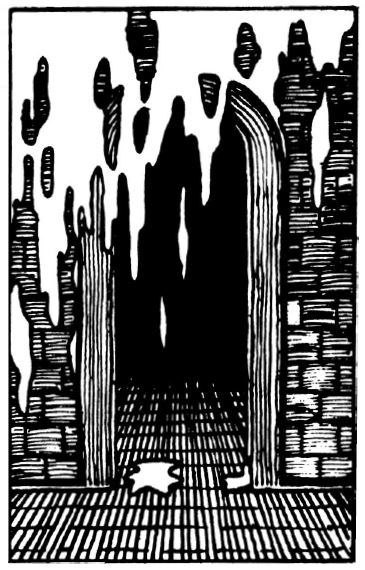 Basics
Basics
The players are attending the midsummer festival in Daggerford. The bad weather has kept everyone inside and the players hear about recent local events which include the attack and looting of a local lord’s estate. Soon there is a public hanging of a Red Wizard of Thay – people believe him responsible for the attack/looting. The party is then sent to help a regional Hold fight off a dragon attack. Turns out the dragon stole something in which the party’s patron is interested, so they go off and try to track down the dragon in its lair. They will experience a nice wilderness crawl and then a short dungeon crawl. The party finally finds the item the dragon stole, but the real item they want has been taken already. Along the way they have been betrayed by their guide. Now they must return to town empty handed but with lots of new information.
The Good
++ The adventure features lots of well described NPCs with some good variety… The party’s patron, a paladin named Isteval, the Elf whose estate was attacked, the Duke of Daggerford, the Baronness of the Hold the group defended, and more.
++ There are plenty of random (and pseudo-random) wilderness encounters, complete with wandering monsters, for the party to experience on their way to the dragon’s lair.
++ The adventure features several factions with separate, and often competing, motivations. The factions include a group of diseased lizardfolk, a family of backwater orcish bandits, a black dragon, the Red Wizards, and a Rakshasa.
++ The small dungeon features an interesting set of terrain effects. My favorite is the combustible swamp gas, which can be circumvented with a bit of observation and quick thinking.
++ The magic items featured in the adventure are, for the most part, varied and interesting. It is obvious that thought was put into the magic items presented and they are neither too powerful nor are they useless – the majority have a good balance between cool and useful.
++ There is a real possibility that the PCs could get exposed to and catch a disease. This has very real consequences if the players ignore the situation.
++ There are a couple of places where the adventure presents good foreshadowing of events, and if the players are paying attention it can really pay off. One example is a dead dwarf that holds a coin. If the PCs find the skeleton and try and find out some lore about the dwarf and the symbol on his coin, it could pay off in a future adventure.
++ Evocative opening scene… the opening scene of a Red Wizard being put to death in public, with his eyes and mouth sewn shut, is a very compelling image. This should get the characters interested in the story, but it does have its downside (see my comments in The Bad below).
++ The feel of this adventure (and the next one) is very exploratory. There are ample rewards for asking questions and exploring/searching every possible thing described. Lots of statues will provide rewards if they are searched comprehensively. If the party explores areas that are off the beaten track they will be rewarded with items that may help them later, but could also be dangerous. I am thinking of the Ring of Acid Resistance that they can find in the nest of a Carrion Crawler (page 27). This ring will possibly help them against the dragon, but it is not necessary to finish the adventure. There is a fountain (page 24) which will reward curious PCs who try dangerous things (i.e. if they drink the fountain water it will heal them). There are also plenty of areas without a treasure reward for exploration (e.g. the shrieker in the mushroom cavern on page 27 – no treasure and only danger as a reward since the shrieker lets the dragon know there are intruders). These teach the players that sometimes they will not get a huge reward for being nosey, but the rewards for most of the out-of-the-way places are good enough to keep the players interested in finding new things.
++ This adventures reads like a training adventure. It feels like a great adventure for beginning characters because it has 1) a small dungeon that has something to offer in every nook and cranny, 2) a wilderness area that can be explored to help build player skill, 3) many different factions of creatures to meet and parley (or fight), and 4) close-by civilization in which to rest and recuperate after a few forays into the wilderness or dungeon complex.
The Bad
– – The Rakshasa who is a major villain in the book can be used as a guide to get the PCs to the areas they need to go. This is distasteful to me – I do not like throwing in an NPC who leads the party by the nose and then betrays them. There are better ways to get the Rakshasa involved and let the players know he exists (or not, depending on what the DM wants for the campaign). I would have preferred some advice to the DM about how to get the players to go in the right direction, or how to give them clues that let them know they are on the right track without resorting to a DM-NPC-Guide.
– – At the end of this adventure, if the PCs have slain all of the creatures presented to them in the dungeon, they will only gain 1330 xp. If the party has 4 PCs, that means they will have earned only 332.5 xp each. If the party has 5 PCs they will only have earned 266 xp each. This is provided they don’t kill the rakshasa or the dragon because the book tells the DM that they players shouldn’t directly fight the rakshasa or dragon, so I did not add in their XP values. Even if they each get 200 more xp from random wilderness encounters (which would be a lot of encounters!) they cannot hope to be anywhere near reaching 4th level.
A major flaw here is that the adventure tells the DM that the PCs should be at least 4th level at the end of the Fane of the Sun Swallower, but the How-To-Play document doesn’t contain any character advancement tables, so the DM has no idea how many xp are even needed to get the players to 4th level. For the record, they need 2250 each to be 4th level.
There are many ways to get around this problem and get the PCs up to 2250 xp. The DM could give them a slugfest-o-rama full of random wilderness encounters until they are burned out (grinding: yuck!), provide them with xp for completing quests, go old-school and give them xp for treasure (1gp=1xp), or to simply level them up to 4th at the end of the adventure regardless of the actual earned xp. I have no problem with any of those choices, but the issue here is that NO advice is given to the DM about this issue. The How-To-Play mentions that quest xp can be given, but gives no advice about it, and as I mentioned before, is missing the character advancement tables anyway.
– – As much as I like the disease possibilities provided by the lizardfolk and their backstory, the book gives inconsistent information regarding the disease condition (see pages 13 and 17 to see the difference). This seems like a simple error wherein something was changed in two places but was missed in a third. That would be fine if it was the only time something like this happened in this product, but it isn’t. In fact, the proofreading on this thing gets increasingly bad as the page count goes up.
– – The set-up and story arc make the goals un-obtainable. Out of the 3 elemental keys that the PCs seek, they only have the slightest chance of getting one of them. My players feel really railroaded when the thing they keep trying to obtain gets taken right before they get there after all their hard work. Especially when it is stolen by a betraying NPC.
– – The book includes no useful wilderness map, which is a huge wasted opportunity, especially because they go through the trouble of building the wilderness exploration into the adventure (complete with wandering monster tables). At the very least they could give some advice to the DM regarding how to run a small hex-crawl style random wilderness experience sans map, using the included tables.
– – As much as I like the evocative nature of the opening scene, it also presents a problem. Unless the DM does a good job of helping players set up backgrounds, there is no real involvement by the PCs in the early events. They are observers, watching the Red Wizard get hanged. This would be easily avoided with some short advice about how to set the players up and give them backstories that should make them more invested in the current events of Daggerford. Of course, the book lacks that advice – and yet there is ample space left over at the end of the book that I think they could have slipped a few paragraphs of advice into the meat of this adventure.
– – Which leads me, in a round-a-bout way, to my last complaint about the adventures… too much read aloud text. If the players need to know this information, then give the DM advice regarding how to impart that information using NPCs, important townsfolk, and the skill of the players. Once again, no advice, just boxed text.
The Cursed Crypts of Ambergul
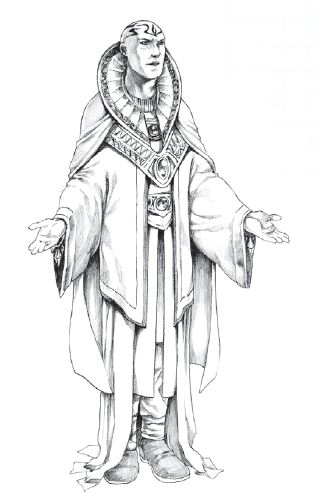
Basics
Upon returning to Daggerford, the PCs learn that Darwa Dalion, an NPC who turns out to be a Red Wizard, is wanted for conspiracy (with the last Red Wizard they put to death). The PCs also get asked by a Onya, young pregnant woman, to find the father of her child. Apparently Darwa has hired some thugs to investigate the deserted crypts of the Ambergul family and the woman’s fiance is one of the thugs. When she saw the wanted poster she sought out the PCs to ask for help. She happens to ask the PCs for help in a place where another NPC, and old sage/mage can overhear and he is available to help the PCs. They go off to the crypts and attempt to find Darwa and bring her to justice. Along the way they may find out about the second elemental key.
The Good
++ Once again, good development of NPCs – especially if the PCs rely on people they have already met in Daggerford. Onya and her fiance (Arassan) are introduced and their story ending depends, possibly, on how the characters roleplay their interaction with Arassan. In this adventure the PCs are also introduced to some dwarves from Illefarn.
++ The Crypt is not just a hole in the ground with stairs leading into the earth. The entrance is hidden and makes the PCs/players pay attention.
++ Lots of puzzles and traps for the PCs to interact with, or not, depending on their preferences, and none of which will grind the adventure to a halt. There is a block puzzle (page 42) that requires some thought. A runic teleportation piece (page 46) that could cause some great frustration unless the players figure it out and use it to great benefit. The pools (+riddle) on page 52 can produce some fun moments with PCs. By contrast, the whirlpool (page 55) is more of a non-rewarded distraction. The sphinx (page 61) could provide a great deal of information to the PCs about all manner of things.
++ Like the disease of the lizardfolk, the crypts have physical consequences attached to them. Everywhere you turn in the Ambergul Crypts you find an opportunity to be cursed. Everywhere. By this time it should be easy enough for the PCs to make it back to Daggerford and get healed at the temple, but they might not want to use up so much time getting cured of all their curses! They will have to weigh the benefits of loot/exploration with the disadvantages of being cursed.
++ The Ambergul backstories are developed enough to make them interesting, and could produce some “a ha” moments for the playters. Luckily, if they don’t care to be interested in the Ambergul backstory it isn’t a game killer, they simply will skip a lot of the fun of the adventure. I also like the way they provided a reasoning for Olivine Ambergul’s devolution into a medusa.
++ In keeping with the old-school style of the book so far, this crypt has many elements that I will refer to as: furniture = treasure. Plenty of urns and other large bulky items can be carted out of the crypt and sold for a boat-load of coin if the party wants to bother. This is something that would be necessary at low levels in early editions of the game due to the 1gp=1xp point valuation. However, since DnDNext doesn’t have that treasure = xp conversion, I wonder how long we will see adventures with this sort of bulky, furniture style loot.
++ This crypt has some cool elements. The creature variety is not humongous, but is just right in terms of creature type – these are the types of creatures you will see in an abandoned cypt – wraiths, ghosts, a lich, rats, a lurker and a trapper, etc. It fits the theme and makes sense. The room of pools (page 50) is an iconic, very D&D feeling room. The flesh golem (page 59) is a good example of taking a relatively mundane creature (a golem) and making it more interesting than thought at first glance.
The Bad
– – The scene at the very beginning of the adventure features a puppet show wherein the puppets are telling ‘yo mama’ jokes (page 34). I know the designers were trying to keep this light – as noted by the conspicuous post-it notes with cutesy reactions all over the book – but this part is completely unnecessary. The jokes aren’t funny and the scene adds nothing to the adventure. I have a feeling that the designers were trying to bring back some of the silliness contained in many old school modules, but here it fell flat for me. Blah!
– – As I said above – there are opportunities to be cursed all over the crypt. So many, in fact, that I thought to myself “again?” several times as I was reading through the adventure. I do think it is a good idea to let the PCs face the dangers of crypt-robbing, but it may be too much for the players to appreciate. Especially given that the DM gets no advice regarding how to clue the players in to the fact that an item might be cursed. That advice would be helpful.
The Fall of Illefarn
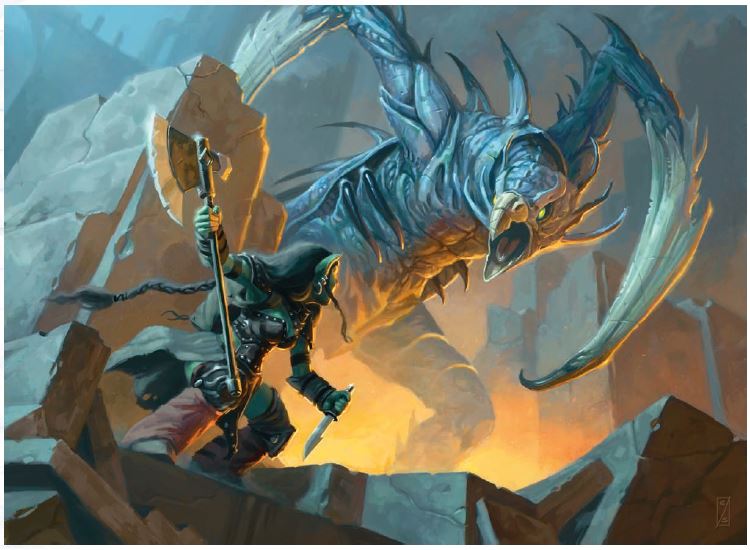
Story
There is a wildfire in Laughing Hollow, a wooded area near Mount Illefarn. A terrible thing, but not much for the party to do to help. The PCs are invited to a dinner with the Duke, at which time the PCs meet the Duke’s capable older sister. They have a chance to speak with her and the Duke, along with Isteval, and the Duke’s chief hunter. After the dinner, Isteval discusses the Red Wizards and their plan to get the elemental keys. Isteval sends the party to mount Illefarn to find the Fire key and return it to him so he can ensure it doesn’t fall into the hands of the Red Wizards. The group travels through the wildfire area and then dungeon crawls through the ancient Dwarven mountain enclave, which is much smaller than it used to be, but is still the largest of the dungeons in this set of adventures.
The Good
++ Once again, the variety and personalities of NPCs in this adventure is pretty good. An interesting Elven prince, the Clotskull Orcs and the Dwarves of the Ironaxe clan, the emo-youth-orc named Grit, and the strange and evil Zev twins. All of these NPCs could turn out to be extremely interesting in a campaign.
++ More good foreshadowing, though not as important or useful as the iron coins from the first adventure. A green dragon can be encountered and may be seen again later in the adventure.
++ The mini puzzle of the iron safes can be a fun, and tricky way for the PCs to earn some loot. Or they could just break them all. Or they could end up getting branded thieves for stealing from the safes. Either way that goes, it should be fun for the players.
++ There is a nice homage to an older adventure here with the orc and half-orc children being encountered (page 80). Do you slaughter them? Are they evil? Are they redeemable?
++ This adventure features some interesting treasure – nothing gets more boring than coins and coins and coins. Here you will find a statue of Moradin creating the dwarves (page 82), a gnome spellbook (page 83), an animated dwarf skeleton that can do your bidding (page 106), a music box of sobriety (page 102) that plays a somber tune that removes the intoxicated condition, and more.
++ There is a really nice use of a spent magic item named VIGILKEEPER (page 91). It is an axe that had magical powers, but has been used up and cannot be recharged. The description is short and sweet and it is a good way to illustrate to players that magic items can be used up and non-replenishable. And on the other hand, if a character wanted to go on the hunt for one of these, it could make an interesting quest.
The Bad
– – There is a really obviously misplaced sidebar in this section. On page 75 there is a block of text describing how to roleplay Darwa Dalion. This is a repeat of the information found on pages 62 and 63 and has no place on page 75. Once again, a copy/paste editing error rears its ugly head. Annoying.
– – The dungeon in this adventure is, by far, the largest dungeon in the book, but it is without a lot of the charm of the earlier 2 dungeons. It is missing many of the interesting bits to search for – all those things I just spent two adventures teaching my players to do are not needed, which may lead to frustration at best (as they try to search for everything they can) or boredom at worst (as they find not much there to maintain their searching). The first and second adventures do a much better job of maintaining interesting and varied environments in small doses. This one just feels like a slog through a generic dungeon – okay, it isn’t that bad, but compared to the first 2 it is lacking.
– – While I think it is great that they did a basic reskin of spells (the gnome spellbook on page 84) I feel they missed an opportunity. These spells are mechanically exactly the same as three other spells, but have different names. If they didn’t want to go through the trouble of creating whole news spells (understandable given that this is to be used with a playtest version of the rules), It would have been nice if the designers had given the DM advice regarding how to let the players/PCs learn what each spell does. Make it a teaching moment for both the DM and the players, which is favorable to simply re-naming a spell and letting it be.
– – In order to obtain the Fire Elemental Key, the book presents a very specific set of circumstances that must be met. A specific bit of information must be learned, and a specific phrase must be said to a specific NPC, and the PCs have to push the NPC on the matter, and then the PCs can get a needed item so that they can go to a different place and use that item. Okay, no problem really, except that if they didn’t get the phrase (from speaking to a dead dwarf, by the way) and they don’t keep on bugging the king after speaking the phrase, then they can’t get the hammer to open the shrine to get the elemental key. Sound complicated? It actually doesn’t read as very complicated, because if the PCs didn’t do step 1 then you can just ignore the rest! It would have been better if the designers had built in some other way to get the PCs to say the phrase (how about an intricately carved owl somewhere in the king’s room that triggers his memory moment when the players comment on it?) or even if they had simply put some advice in the adventure about how to create other ways for the PCs to get access to this information. There are at least three other ways I can think of off the top of my head to get that information to the players – why not add something in as advice to the DM – even if it is just to say that it’s okay to let the players learn this another way?
– – Terrain is well done again in this adventure, sort of. The passageways and caverns of Mount Illefarn are collapsing and some areas have arcane circles inscribed in order to keep the place from tumbling down. Unfortunately not else much is done with these (other than mentioning them) and they quickly become background elements that would seem to get little use. There is a missed opportunity in the shrine room where there are some unrelated protection sigils inscribed on the walls – these could affect the floor circles and make for an interesting bit of terrain play. Even though the shrine sigils make for a brutal room, there could be consequences elsewhere in the complex. The book seems to make a big deal of the collapsing stones, but never really provides a dramatic moment where this occurs.
– – If the players don’t pay careful attention the rakshasa will show up and rob them of their victory. I understand why the rakshasa is set up this way story-wise, but I find it very annoying that he shows up and takes away the reward for the PC’s hard work. At least he didn’t lead them to the place this time…
Dragonspear Castle
Basics
The rakshasa’s story is finally coming to fruition. It turns out that he has been assisting the Red Wizards only to make life difficult for Sir Isteval. The rakshasa really just wants revenge on Isteval and will go to has gone to great lengths to pull off his plan. He lures the party, along with Isteval, to the site of an old, sealed portal to the nine hells. He plans to open the portal and force Isteval to sacrifice himself to close the portal.
The Good
++ There is a nice touch in this adventure in which the PCs can lay the soul of Sarna to rest and therefore do a really nice thing for a past defender of the castle. My only lament is that they don’t get a nice blessing or something for doing the good deed. As a player of many clerics, it is a nice thing to see in the adventure, even if it may be hard for the PCs to get all of Sarna’s background information.+ This adventure features a good overland journey segment, though most of it is boxed text. It does have a nice possible interaction at the inn. Wilderness encounters included are interesting but can be avoided since the PCs have horses. The use of travel in the adventure encourages the players (and DM) to think of time as passing and things are happening as it passes. This as opposed to just hand-waving the travel and declaring that the party made it there safely.
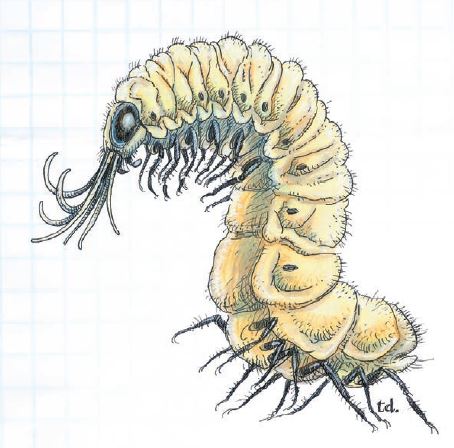
The Bad
– – The setup for this adventure is not as compelling as the previous ones in the book. Perhaps the designers were relying on the fact that Isteval has been a patron of the PCs for several levels by now? Still – it needs a stronger setup.
– – As much as I like that traveling occurs during this adventure, the text has conflicting information regarding times. Page 114 references a 3 day ride to get to The Way Inn, and then the party camps for only one night and arrives at the inn (page 115). Typos and inconsistencies are found throughout the book… “Hello, proofreading and editing? We need help.”
– – This adventure feels tacked on to the rest of the book. Which is curious since the product is named after this particular adventure. This adventure as a whole seems unconnected – in fact, if there was no rakshasa in the 1st or 3rd adventures, this adventure would be completely disconnected from all of the others. That would be just fine with me, but it would not serve the purposes of the product, so the rakshasa shows up in the earlier ones just to make his presence not a surprise in the last one. Circular logic, I know, but which came first, the chicken or the egg?
Along with the disconnected feeling of this adventure as a whole, the last encounter is completely out of sync as well. A death knight has been sent by the Red Wizards to destroy the party for meddling too much in their attempts to get the elemental keys. Like the rakshasa, this seems tacked on just for the purposes of connecting the 4th adventure to the other 3. Otherwise, it makes no sense and doesn’t belong in this 4th adventure!
In other words… The 4th adventure has nothing to do with the elemental keys, so the players don’t get to finish that story-line that was started in the first 3 adventures. To remedy this, the designers threw an encounter on at the end which has a sole purpose of letting them know that the Red Wizards are still up to no good and they are pissed. So what does that have to do with the rakshasa and Isteval? Nothing.
– – One last gripe. In the final battle the rakshasa has shown himself and presented Isteval with the choice to sacrifice himself or let the portal to the nine hells remain open. The portal can be closed if the party holds back the demons for ten minutes while the other cleric NPC I haven’t mentioned yet performs a ritual (provided he didn’t die opening the portal). The portal can also be closed if Isteval sacrifices himself by falling into the nine hells. The book mentions a secret 3rd way that the portal could be sealed. My question is: “How in the F were they supposed to know about the secret holy symbol 3rd option?”
Having this option isn’t the problem. The problem is how the players/PCs could never find out about the option. There really is no way to figure it out beforehand – no overt clues, no ancient documents discovered, no strange rituals mentioned in passing, no hidden secret code hidden in the rakshasa’s final reveal… nothing. It’s boring to tell the players there is a 3rd option. I’d rather them think of an interesting solution on their own and let them attempt it. The book gives no advice regarding tipping the players off to the 3rd portal closure, nor does it mention letting the players think of another way on their own.
Daggerford and Beyond
Basics
This final bit is a simple description of some NPCs who live in the Daggerford region as well as some businesses that can be found therein.
The Good
++ It is nice to have a short section describing Daggerford and NPCs. It isn’t so long that it becomes a chore to read. I particularly like the description of the Lady Luck Tavern, which is a place the PCs would be likely to go! It has a conversation piece (several, actually, but it’s the pillar I refer to here) that could actually lead to more quests if the players wanted to make Daggerford their home base for a while. This is a good overview of the area without relying too heavily on Forgotten realms canon, though it does mention stuff here and there for those who love FR.
The Bad
– – This is a picky thing probably, and most people wouldn’t even notice or care maybe, but… The book mentions that Isteval is a paladin of Amaunator, but believes in the old way of the god (as Lathander). That is, Amaunator is the same as Lathander, but the only those who believe in the old ways call on Lathander. The book describes Isteval as having symbols of Lathander on his clothing and armor, which members of the church of Amaunator consider heretical. He also believes so strongly in Lathander that the local cleric at the temple of Amaunator holds services to Lathander. But after all that, when the book describes Isteval praying over the holy symbol, he calls on Amaunator to get him through. Is this inconsistent? I am not very knowledgeable on FR canon, but when you make a point of saying that a paladin is heretical and then don’t display that in the adventure it makes me wonder why that part was mentioned at all.
– – There is a real missed opportunity for developing the relationships between the people of Daggerford. I wish the designers would have used their silliness here to describe relationships between NPCs a little more playfully. Much of this section is relatively boring – luckily it isn’t too long.
– – Some of the NPCs in this section are interesting, but unfortunately we didn’t get to hear about them or see them in action. Why did we not get the pleasure of interacting with Trista the strange court wizard during the adventure? She is the most interesting and ballsy NPC so far and I would have liked to see her interactions with the Duke and Isteval.
– – No map of Daggerford is included. It would have been nice to have a small player map of the town – there is plenty of space and it would have been a nice hand out.
– – More typos. Sometime in Daggerford’s history, a trade building was wiped out by an ore raid. I laughed. An ore raid. Simple thing to catch with a tiny bit of proofreading. I wouldn’t even mention it but there are so many in this book that I just can’t fail to bring it up. At one point the party finds 3 bags of treasure, 2 sack #1s and a sack #3. Funny, but not intentional, so more sad than funny.
ART
The art in the book comes from all editions of D&D, including some concept art produced for 5e. This is a nice bit of flavor but it is a bit strange to see several renditions of the same creature. I think this is what they were going for, though, so I am not dinging them on that. It actually does look cohesive when flipping through for the most part.
I have sprinkled bits of art from the book throughout my review (randomly, that is, the places I put them in my post have no relation to the book or the events in the book). Among them you will find a nice homage to the 1e PHB, concept art for a Red Wizard, some 1e green slime, and several more pieces.
VERDICT
Adventures: There is enough here to sink your teeth into. The first 2 adventures are well done, the third is passable and the 4th is okay if you can get past the fact that it feels a bit tacked on. If you run these four adventures as a campaign, one right after the other, you can do a small amount of work and make the transitions between the adventures and the climax in adventure 4 a bit smoother.
Production Quality: Nice thick cover and the binding on my copy is holding together very well. The pages are nice and thick and the color seems to hold to the pages well. The GenCon price of the book was $29.95 for a full color print version. It is now available at dndclassics.com for $17.99 – which seems a steep price to me, especially for a pdf that contains outdated rules and a large number of typos. On the other hand, you could, theoretically, use this one single book to run an entire D&D campaign and not have to purchase anything else. So for that, $17.99 is a good deal.
Overall: I am glad that I have this book, and I think it contains a couple of very good “training” dungeons. I will be running my group through at least the first 2 adventures starting on Feb 5th. I ran a different sort of set-up for the game and the players are much more invested in the Red Wizard’s hanging scene at the beginning of the adventure.
Future Products: One of the things I really want for the next edition of D&D is a good amount of advice for starting DMs right at the outset of the edition release. This book could be so much better if it contained more advice for the DM. I know this particular product was not aimed at new DMs, but I really hope that WOTC doesn’t keep putting out products like this that are almost great. If they removed the 4th adventure and added a ton of new DM advice, this could be an iconic starting set of adventures that teaches the players and the DM valuable lessons and good habits. Hopefully they will take some ideas out of this book and add it to some new ideas and create an initial product offering that blows previous “starter” adventures away. This product isn’t it, but it could be a big step in the evolution of one.
This has been an extremely long review – if you stuck it out, Thanks for reading! If you simply skipped to the bottom… I’m gonna send this little guy after you:
Just kidding… go buy this if you want a smart, short set of adventures with lots of, but not too much, old school flavor!
~Until Next Time, I Wish You Good Gaming!

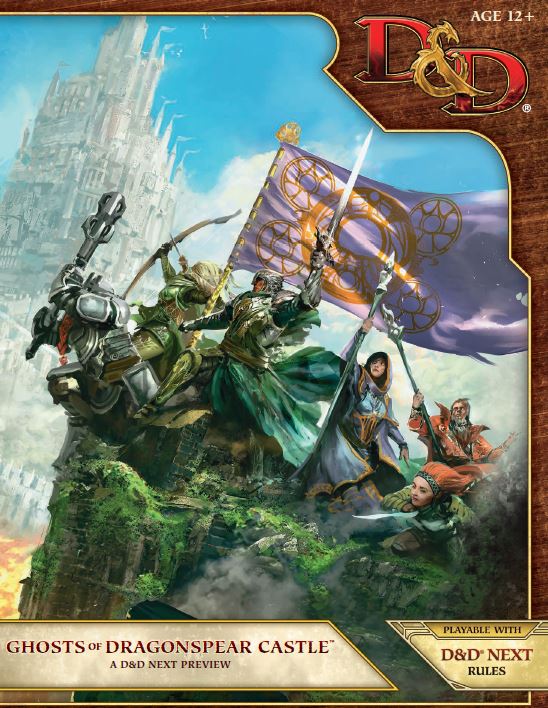
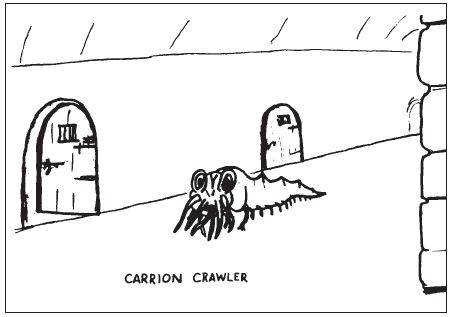
Good read. Even though I have this i am not likley to run any of these game. The drive for next is lagging. thanks for covering this though. as always nice work Sam.
Thanks Symatt!
I understand what you are saying – my interest would probably wane for DnDNext if I weren’t running it in one of my face to face groups. I hope it has a good launch and becomes very popular. That doesn’t mean that I think gamers should ignore the games they already play and love – there is room for all games as long as someone enjoys them! I just hope that DnDNext finds a niche.